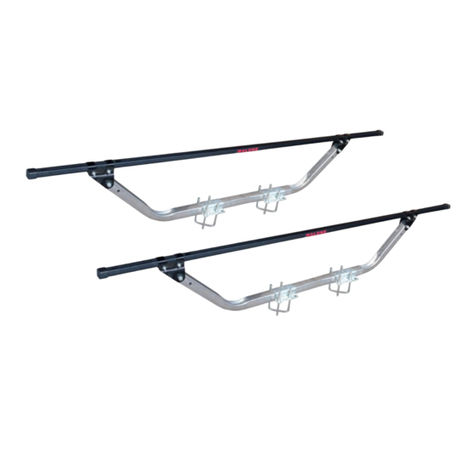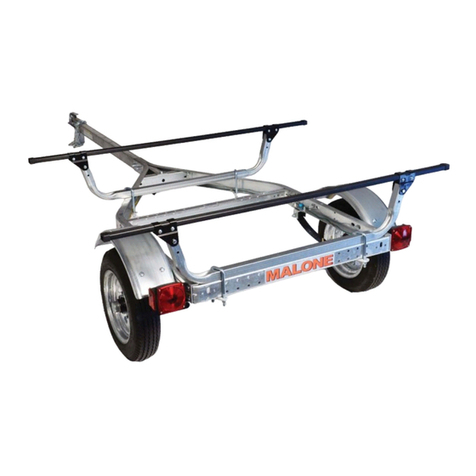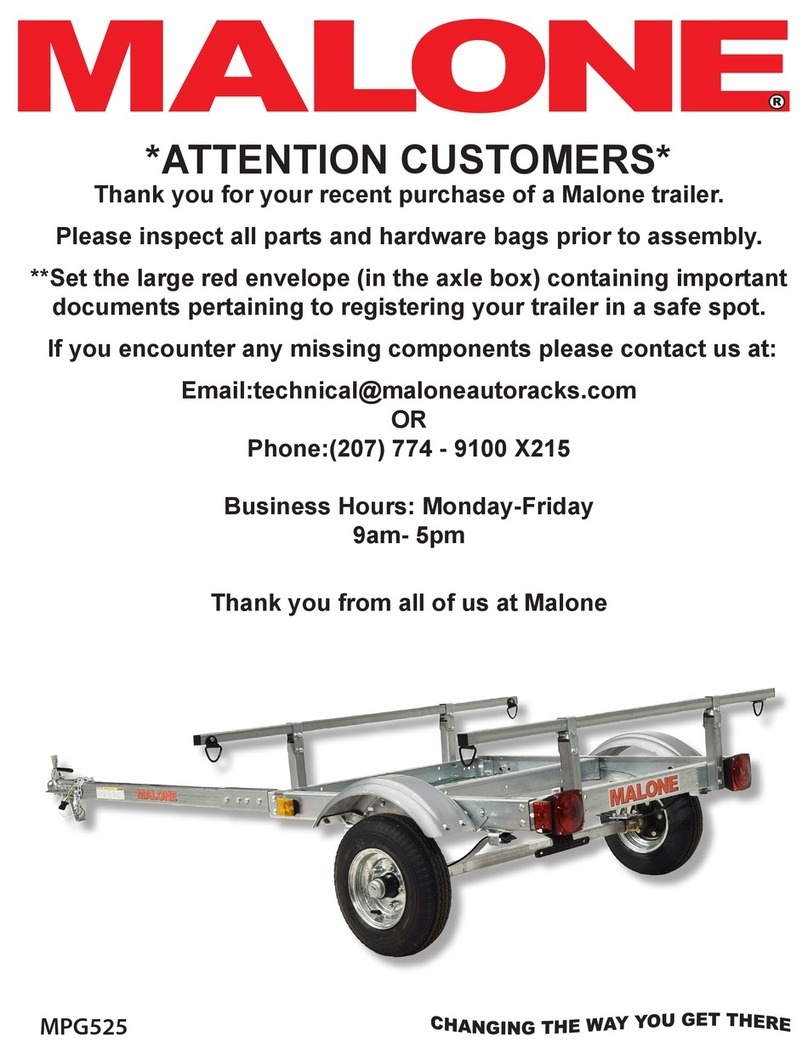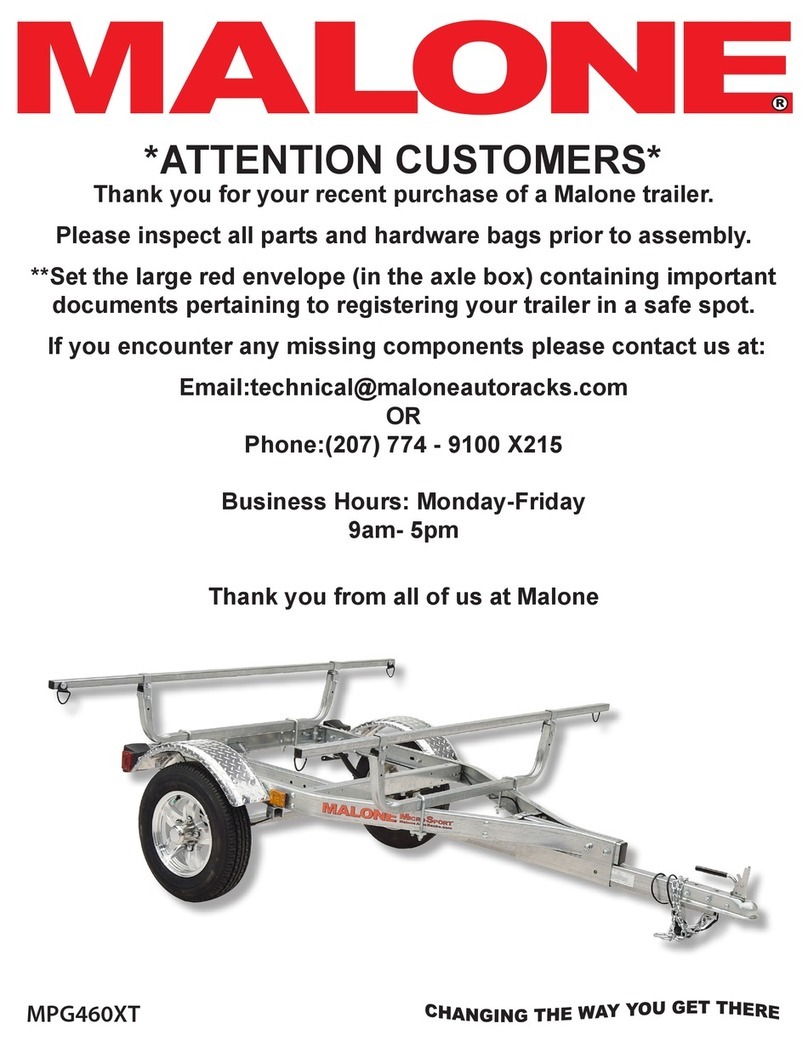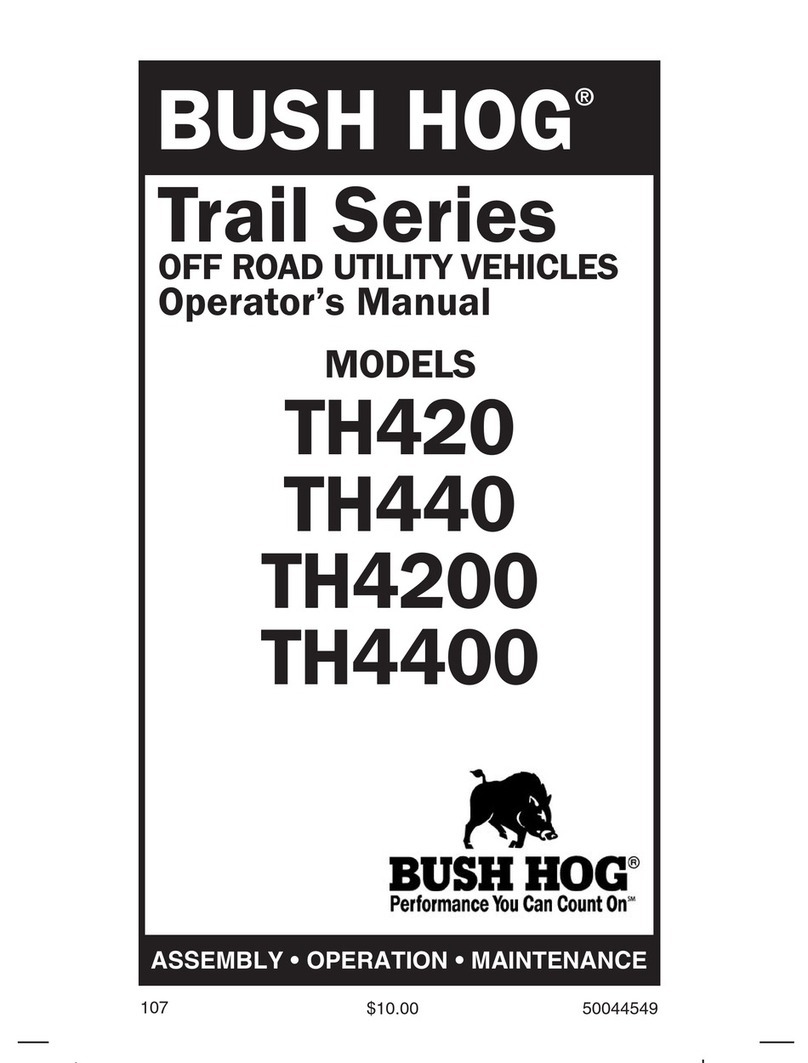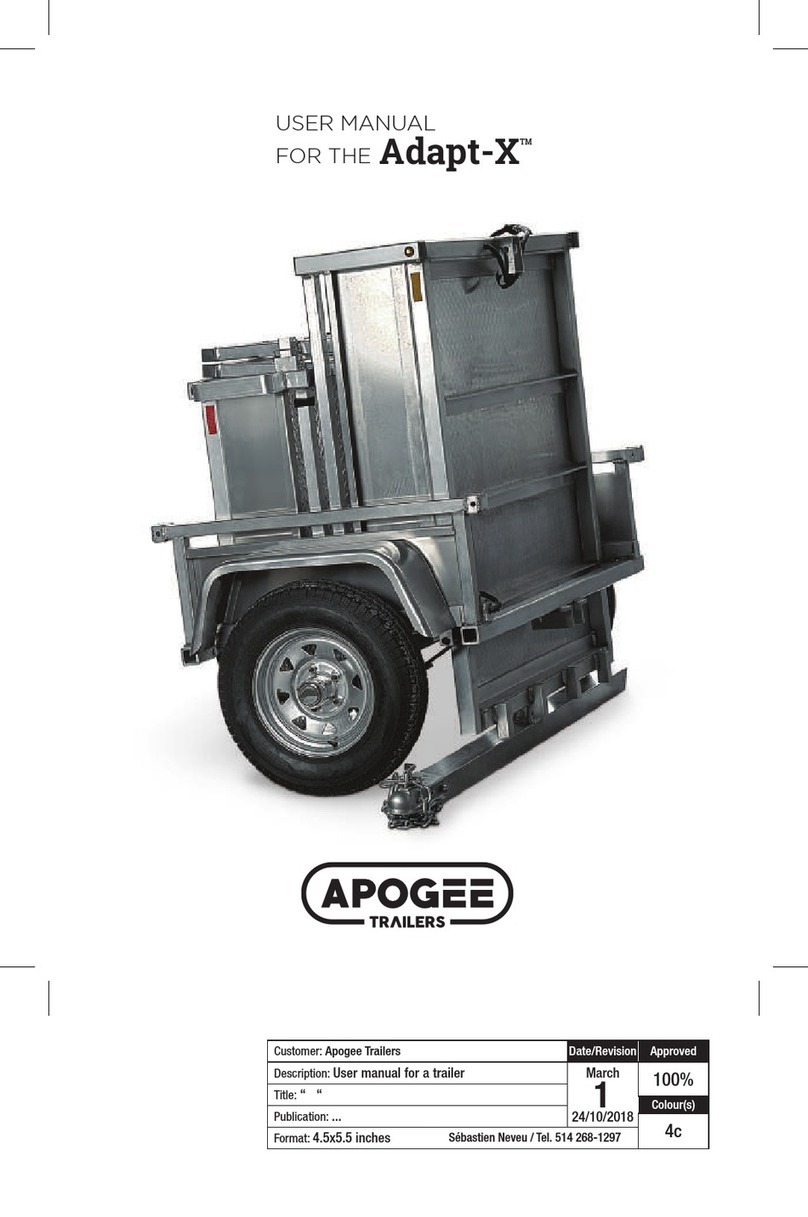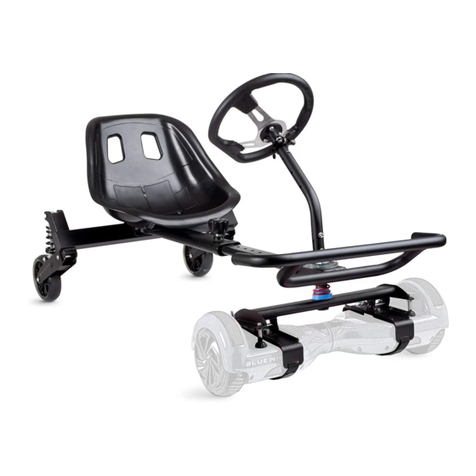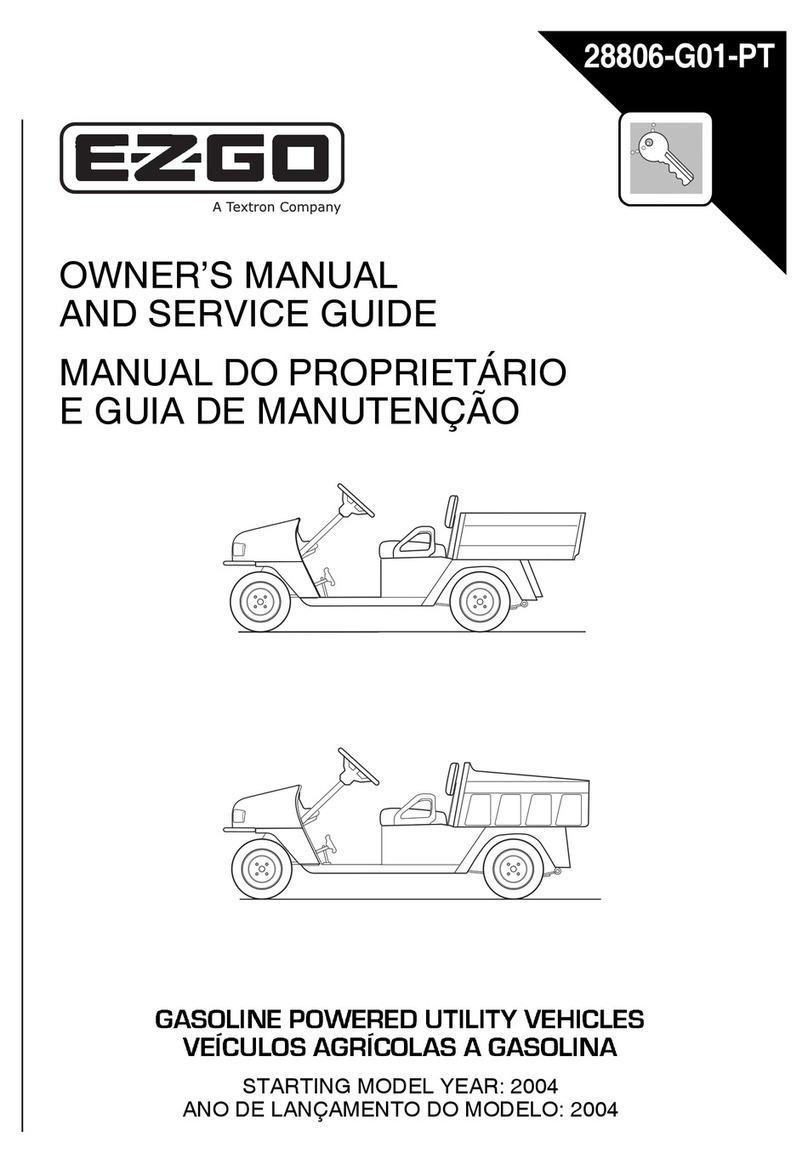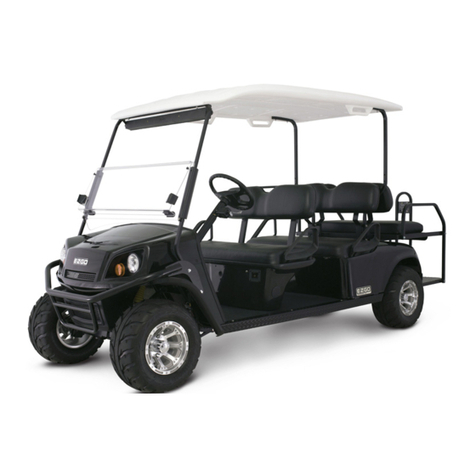Malone EcoLight MPG585 User manual

MALONE
R
MALONE
R
Trailer Checklist & Maintenance Manual
MPG585 EcoLight
TM
MPG535 MegaSport
TM
MPG460G MicroSport
TM
MPG595 XtraLight LowMax
TM
TM

Congratulations on your new Malone trailer!
Take a couple minutes to read through this manual for commonly asked questions and
some basic trailer maintenance that will ensure your trailer is preforming at its best.
And as always please free to contact us with any questions you may have.
ank you for choosing Malone.
Basic Trailering Checklist:
Before hitting the road for your next trip be sure to check the following.
~ Coupler, hitch and hitch ball are all the same size (2” ball required)
~ Coupler and safety chains are safely secured to hitch of tow vehicle
~ All fasteners are properly tightened
~ Boat is securely tied down to trailer ( a winch line IS NOT a tie down)
~ Wheel Lug Nuts are properly tightened
~ Wheel bearing are properly adjusted and maintained
~ Load is within maximum load carrying capacity
~ Tires are properly inated
~ All trailer lighting are working properly by having a friend or family member
occasionally stand behind your trailer and make sure the brake lights, taillights and turn
signals are in good working order
Additional checks you can do.
Conduct routine maintenance by having a friend or family member occasionally stand behind your
trailer and make sure the brake lights, taillights and turn signals are in good working order. As with
your boat, a thorough freshwater wash down of your trailer aer each use will extend the life of your
hubs and lights. It’s also a great boat maintenance idea to invest in a spare wheel, just in case.
Trailer hubs and lights can potentially get dunked twice every time you go boating. You need to
pamper them as you would your boat - this is an essential element of boat trailer maintenance.
Do an occasional hub inspection by popping o the cap with a screwdriver. If the bearings are dry,
add grease. It’s simple. Lets jump to the next page for a detailed step by step.
Be sure to review the table on the next page for trailer FAQs’ and specications.

Some trailers now have an integrated ‘zerk’ on the backside of the hub. For the customer it means
they can do periodic grease “freshenings” without disassembly of the hubs.
Procedure for hub with integrated zerk tting:
i. Prepare a disposable container for the old grease to fall into.
ii. Remove the wheel and dust cap.
iii. Clean/Wipe the grease tting and Attach grease gun to the grease tting.
iv. Pump fresh grease in until fresh clean grease is visible oozing out the front bearing.
(about 1/3 of a tube)
1. If the old grease is just dark the condition of the hub should be ne for another
season.
2. If there is any water or if the grease is a white milky color then the grease seal has
likely failed.
a. e hub must be disassembled, the grease seal replaced, bearings likely will
need to be replaced too.
3. If there are shiny metal fragment in the old grease then the bearings are failing and
must be replaced.
4. Wipe excess from front and re-install the dust cap.
Procedure for hubs with-out a zerk tting:
i. Prepare a disposable container for the old grease to fall into.
ii. Remove dust cap, cotter pin, crown nut, washer. Pull hub o spindle.
iii. Inspect inside the hub where the cups seat and the spindle for scoring, pitting,
bending, dents, thread or other damage.
iv. With the hub removed, hand-pack fresh grease in until fresh clean grease is visible
oozing out the front bearing. (about 1/3 of a tube)
1. If the old grease is just dark the condition of the hub should be ne for another
season.
2. If there is any water or if the grease is a white milky color then the grease seal has
likely failed.
a. e hub must be disassembled, the grease seal replaced, bearings likely will
need to be replaced too.
3. If there are shiny metal fragment in the old grease then the bearings are failing and
must be replaced.
4. Wipe excess from front and re-install the hub and dust cap.
Integrated zerk tting on
the backside of the hub

Adding your own Zerk tting to avoid the previous steps above:
i. You can add your own zerk tting to the front of your hub by adding a Bearing Buddy®
Protector.
ii. Look for Model# 1980A and follow the manufactures instructions for use.
Type of grease to use:
Automotive bearing grease is OK in a pinch, marine wheel-bearing grease is better, and
synthetic marine-wheel bearing grease is best. Best advice: Use a high-quality synthetic marine
grease that’s water resistant, and do the best job possible cleaning out the old grease when
repacking. Don’t mix old and new greases if possible, and record what grease you’re using,
so you know what to apply when your bearings need a shot of the slippery stu.
Damaged Bearings? Replace them right away with Bearing Kit# 27111
Procedure: For all of your spare part needs Visit www.maloneautoracks.com/Replacement-Parts
1. Remove dust cap, cotter pin, crown nut, washer. Pull hub o spindle.
2. Use a hammer and a mild steel bar to drive out old inner cups.
3. Use a solvent such as kerosene to clean the hub, nut, washer and spindle. All dirt and
old grease must be removed.
4. Inspect inside the hub where the cups seat and the spindle for scoring, pitting, bending,
dents, thread or other damage. Pay close attention to the raised rear surface of the
spindle where the grease seal grips. If it is scored or pitted the grease seal may leak.
5. File o nicks or burrs using a ne le or emory cloth, then wipe away any lings, then
re-clean with solvent.
6. Coat the spindle and the inside of the hub lightly with grease.
7. Use the mild steel bar to drive the new cups in to the hub until they are solidly seated.
Do not damage the cup surfaces.
8. Pack both bearings with grease forcing grease inside the cage in-between all the rollers
starting at the large end until grease shows at the small end.
9. Install the packed rear bearing in the hub.
Seal
Inner
Bearing
Inner Cup
Hub
Outer Cup
Outer
Bearing
Dust Cap
Cont. on next page

Damaged Bearings? Replace them right away. Continued
Procedure: Continued
10. Install the grease seal. Don’t hammer directly on the seal. Use a block of wood. Take
care to drive the seal in straight. Seal should be ush to the outside surface of the hub.
11. Fill the hub, in behind the seal, with grease then slide the hub over the spindle being
careful not to damage the seal against the spindle. Pack the hub full of grease.
12. Install the packed outer bearing and cup then pack more grease into any voids and in
stall the washer and nut.
13. While turning the hub, use a 12” wrench to tighten the nut until the hub begins to bind
indicating that all the bearing parts are sealed properly.
14. Back o the nut about ¼ turn, as needed, until you have between .001” to .007” of end
play.
15. Warning: Failure to back o the nut to allow end play may cause the bearings to over
heat and fail creating a risk of serious bodily harm.
16. Lock the nut in place using a new cotter pin.
17. Re-check end play. Install the dust cap.
Notes

Towing Speeds/Tips:
The hubs on your trailer are already fulled packed with a high-speed, high-temp grease,
allowing you to safely tow at any posted speed limit. Including highway speeds.
You need to allow for extra time and room when switching lanes, stopping, and passing other
vehicles when towing a trailer. You must also swing out wider when traveling around bends and
corners as the trailer does not follow the exact path as the vehicle on turns.
Travel at moderate speeds to conserve fuel. Use a lower gear to ease stress on your transmission and
engine when climbing long steep hills. Shiing out of overdrive and into a lower gear may also
improve vehicle gas mileage.
Use extra caution around potholes and other large bumps. ey can damage the tow vehicle, trailer
hitch, and trailer. When pulling a trailer, take your time and be careful.
If for some reason (a gust of wind, a downgrade, a pass by a larger vehicle, etc.) the trailer does
begins to sway, the driver needs to assess the situation to determine the proper course of action.
Here is a list of dos and don’ts to think about.
Good Towing Practice:
Gradually reduce speed
Steady the steering wheel - sudden turns can cause more sway
Pull to side of roadway if needed
NOT Good Towing Practice:
Do not slam on the brakes - jackkning could occur
Do not attempt to steer out of a sway situation
Do not increase speed - trailer sway increases at faster speeds
Do not tow a trailer that continues to sway
Consider reloading the trailer or perhaps adding a sway control or a weight distribution
system with sway control
An unbalanced load can also create trailer ‘sway’ when in tow. When loading gear keep in mind the
tongue weight, downward pressure on the ball by the coupler, shouldn’t exceed 10%-15% of the
overall weight. If you experience any sway when towing, stop and adjust your payload forward or
back as needed.
DON’T FORGET: When loading gear keep in mind the tongue weight, downward pressure on the
ball by the coupler, shouldn’t exceed 10%-15% of the overall weight. If you experience any sway
when towing, stop and adjust your payload forward or back as needed.

Electrical/Lighting
Properly functioning trailer lights are a must for safety, so check your lights every time you use your
trailer. Some problems, such as a burned-out bulb or a bad ground wire, can be a snap to x—others
can be a real pain to diagnose and repair.
Wiring Diagram For Trailer Lights
Note: Wiring colors are the same from incandescent lights and LED light kits.
Yellow (driver’s side turn signal)
Green (Passenger side turn signal)
Brown x 2 (running lights , both sides)
White (common ground
Trailer Wiring Assembly
Incandescent wiring LED wiring
Our trailers use a standard at four pin connection at the harness. Some larger vehicles are outtted
with a round 7 pin conguration. If this is the case on your vehicle you’ll need to use an adapter like
the one pictured.

Electrical/Lighting Continued
We can’t cover every scenario in this manual but here’s some trouble shooting we can do to help get
your trailer back in top condition.
Having a helper standing behind the vehicle to see if the lights are working will make the process go
a lot quicker..and save you from running back and forth.
1). Start at the Vehicle
If your lights seem dim or don’t work at all, lets start with the harness at the vehicle. is will require
an electrical tester that you can nd at your local hardware store. is tester will tell you right away
if you have a problem from your car or truck. If the tester shows a problem, check the operation of
all your vehicle lights to make sure you don’t have a blown fuse, a burned-out light or a bad asher.
Clean the connections and check again. Check for broken wires near the connector. If you still have
problems, make an appointment to have the wiring checked.
If the lights on the tester function properly, the problem is the trailer lights or harness.
2). Clean Every Connector
If we’ve determined the vehicle is okay and lights still aren’t working properly, clean all the contact
pins with a good quality electrical contact cleaner and a ne wire brush.
3). Check the Ground
Most problems occur because of a bad ground. If your using incandescent lights, they should be
grounded at the front of the trailer along the metal frame (should be a white wire).
Double check and clean all connections with sandpaper. If the ground screw is corroded it should be
replaced.
LED lights on the hand use the vehicle as the ground. SO if theres a grounding issue it’s back at the
vehicles plug or wiring.
4). Replace Bad Bulbs & Clean Corroded Sockets
If you have just a single light out chances are you just need to replace the bulb. Remove the lens
cover, replace the bulb(s). Test it and if ti works your on your way.
If the light still fails to work, we need to check and clean all the sockets of any corrosion. Some
simple sandpaper around a wooden dowel works great.
5). Testing the Continuity
Bad, or broken wiring can also lead to failures. Check the trailer wiring with a continuity tester
available at your local automotive shop. Follow manufactures instructions for use and testing
procedure.
6). Replace the Wiring
If you’re nding badly corroded parts and all else fails, you can buy a new wire harness for about
$30-$60. A new harness should include the wiring connector, lights and lenses, and complete
instructions. In most cases, it can be installed in about two hours or less.

MALONE
R
Limited Five Year Warranty
MALONE AUTO RACKS, 81 County Road, Westbrook, Maine 04092
Phone: 207-774-9100 Fax: 207-615-0551
Website: www.maloneautoracks.com Email: sales@maloneautoracks.com
Repair or replacement of a defective product, or the issue of a refund or credit (as determined by Malone) is the original
retail purchaser’s exclusive remedy under this warranty. Damage to original purchaser’s vehicle, cargo, or property, and/
or to any other person or property is not covered by this warranty.
This warranty is expressly made in lieu of any and all other warranties, express or implied, including the warranties of
merchantability and tness for a particular purpose.
Malone’s sole liability is limited to the remedy set forth above. In no event will Malone be liable for any direct, indirect,
consequential, incidental, special, exemplary, or punitive damages , or, for any other damages of any kind or nature
(including but not limited to, lost prots, lost income or lost sales).
Some states do not allow the exclusion or limitation of incidental or consequential damages, so the above limitations
may not be applicable. This warranty gives you specic legal rights and you may also have other rights which vary from
state to state.
In addition, all vehicular transports are potentially hazardous. Any person using MALONE products are personally
responsible for following the given directions for use, installation and accepts full responsibility for any and all damages
or injury of any kind including death, which may result from their use.
The Malone Auto Racks (Malone) Limited Five Year Warranty covers certain Malone-brand products that have been specically
identied for inclusion in the program and is eective for ve years from the date of purchase for the original retail purchaser.
This warranty is terminated after ve years from the date of purchase, or, when the original retail purchaser sells or otherwise
transfers the product to any other person or entity during the ve year warranty period.
Subject to the limitations and exclusions described in this warranty, Malone will remedy defects in materials and/or
workmanship by repairing or replacing, at its option, a defective product without charge for parts or labor. Malone may
elect, at its option, not to repair or replace a defective product but rather issue to the original retail purchaser a refund
equal to the purchase price paid for the product, or credit to be used toward the purchase of a replacement Malone
product.
This warranty does not cover, and no warranty is given for defects or problems caused by normal wear and tear which
includes but is not limited to surface (aesthetic) metal corrosion, scratches, dents, deformities, accidents, unlawful
vehicle operation, or any modication of a product not performed or authorized in writing by Malone.
In addition, this warranty does not cover problems resulting from conditions beyond Malone’s control including, but not
limited to, theft, misuse, overloading, or failure to assemble, mount or use the product in accordance with Malone’s
written instructions or guidelines included with the product available to the original retail purchaser.
No warranty is given for Malone products purchased outside of the United States, Canada and Mexico.
If the product is believed to be defective, the original retail purchaser should contact the Malone dealer from whom it
was purchased, who will give the original retail purchaser instructions on how to proceed. If the original retail purchaser
is unable to contact the Malone dealer, or the dealer is not able to remedy the defect, the original retail purchaser should
contact Malone by email at technical@maloneautoracks.com.
In the event that the product must be returned to Malone, a technician at the email address above will provide the
original purchaser with return shipping instructions. The original purchaser will be responsible for the cost of mailing
the product to Malone. In order to receive any remedy under this warranty, a copy of the original purchase receipt,
a description of the defect and a return address must be provided.
Disclaimer of Liability
This manual suits for next models
3
Other Malone Utility Vehicle manuals
Popular Utility Vehicle manuals by other brands
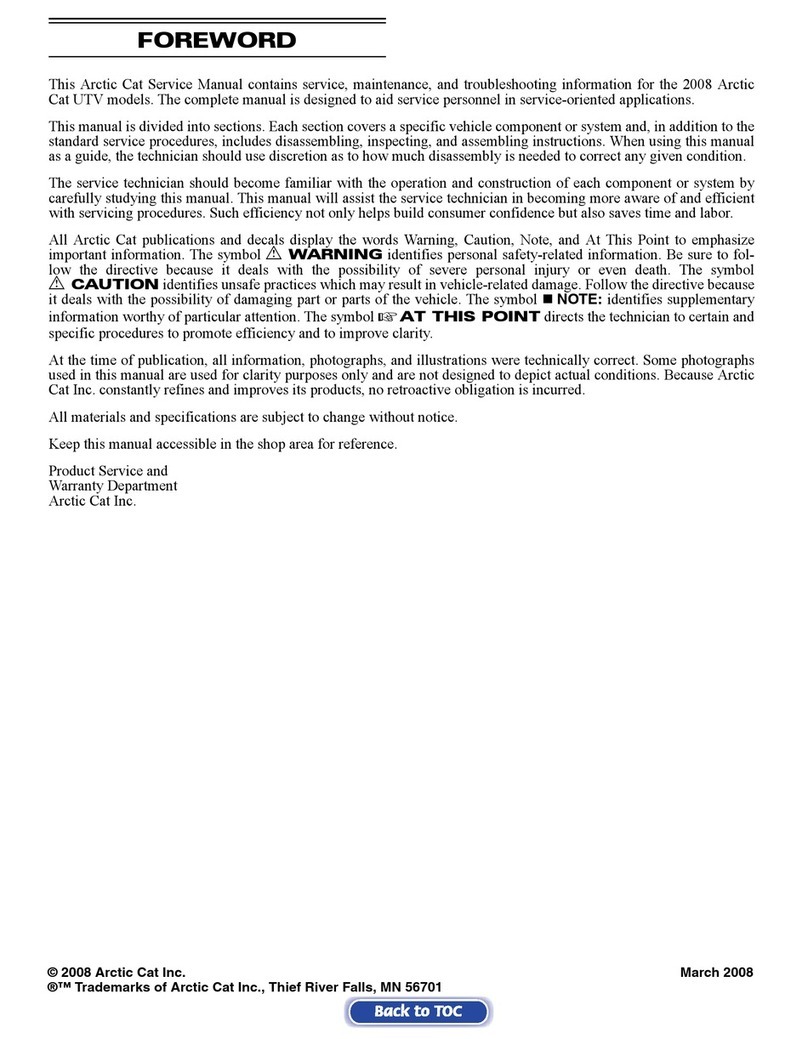
Arctic Cat
Arctic Cat 2008 Prowler Service manual
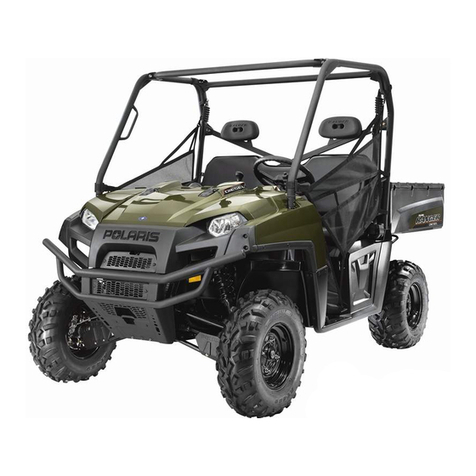
Polaris
Polaris RANGER Diesel 2013 Owner's manual for maintenance and safety
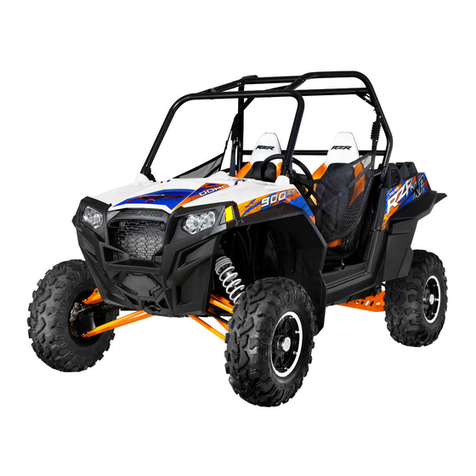
Polaris
Polaris xp 2013 eps Service manual
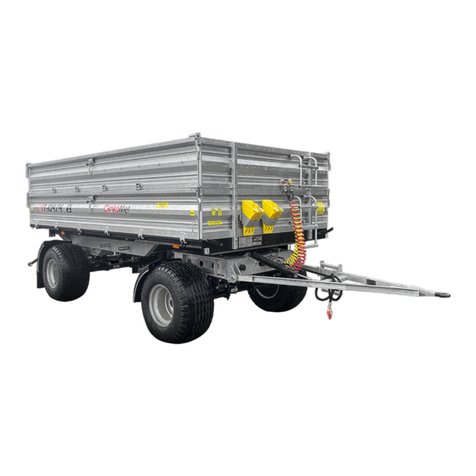
CynkoMet
CynkoMet T-104/4 Instructions for Use and Operation

YBIKE
YBIKE Explorer owner's manual
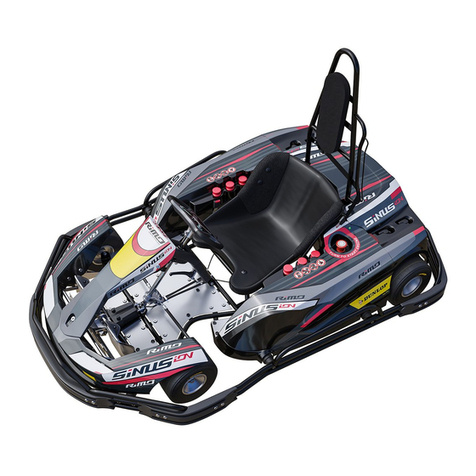
RiMO
RiMO SiNUS Series User and maintenance manual
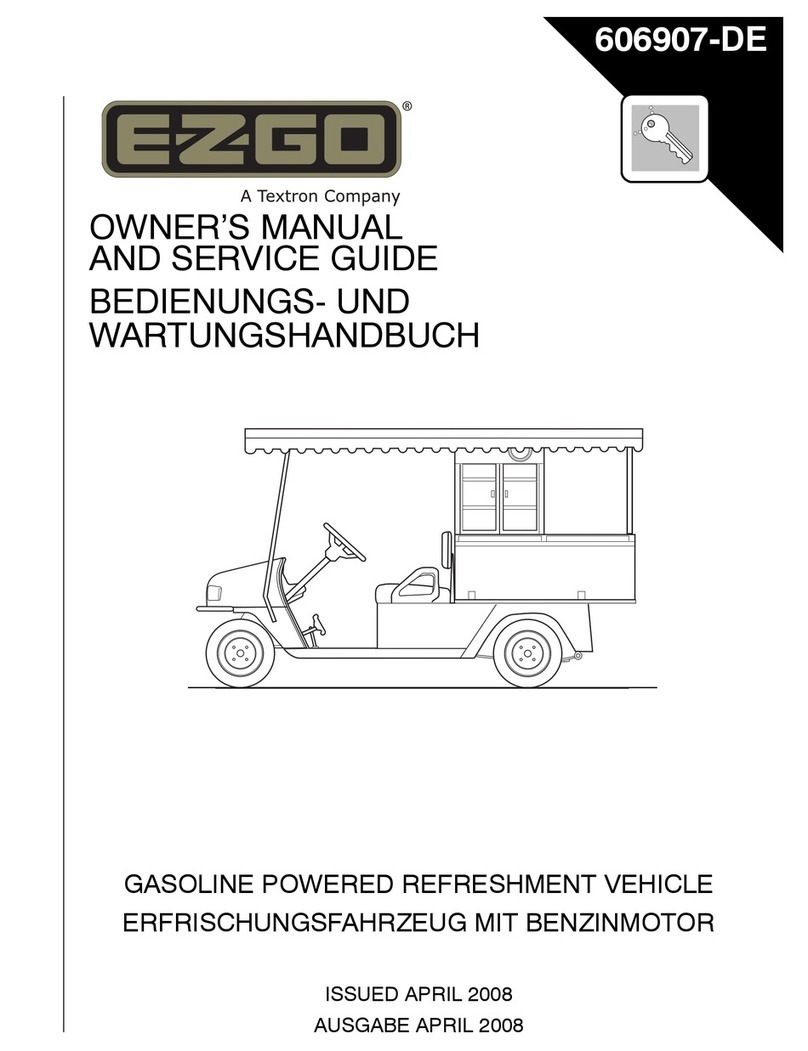
Ezgo
Ezgo REFRESHER 1200 CARB Owner's manual and service guide
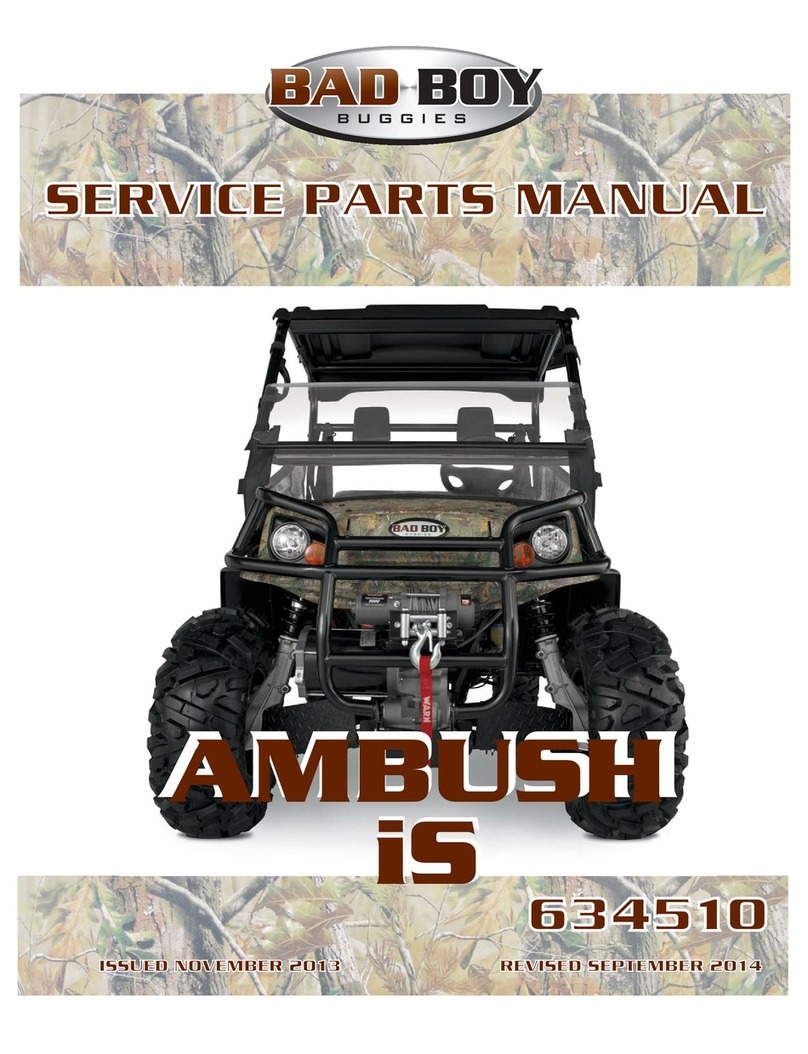
Bad Boy
Bad Boy Ambush IS Service & parts manual

PLAYTIVE JUNIOR
PLAYTIVE JUNIOR MERO Instructions for use

BilJax
BilJax ESCALATE TRAILER ET 12000 Operation and service manual
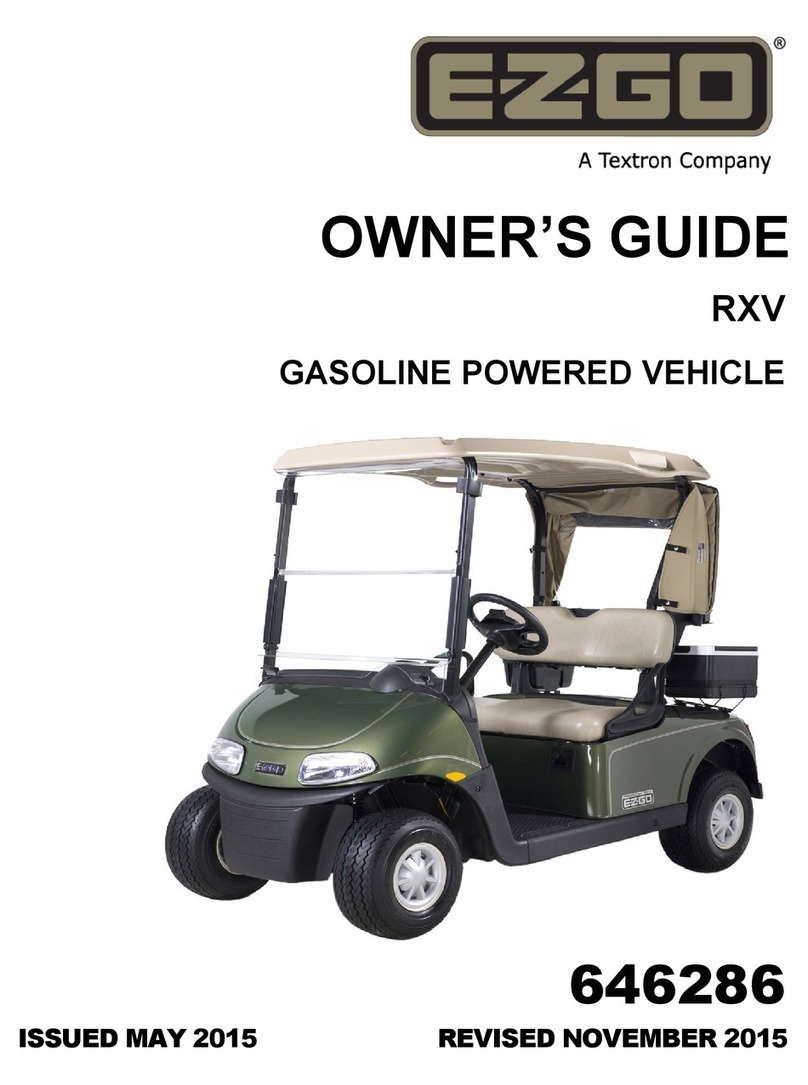
Ezgo
Ezgo RVX owner's guide
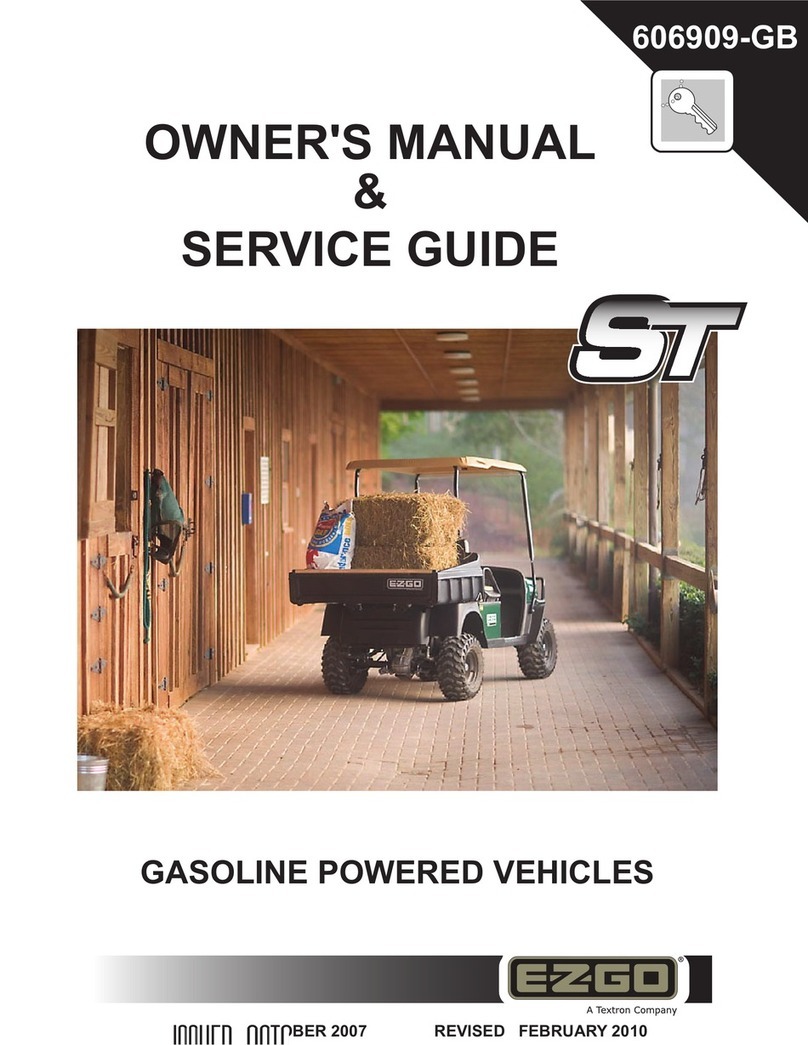
Ezgo
Ezgo ST SPORT Owner's manual & service guide
